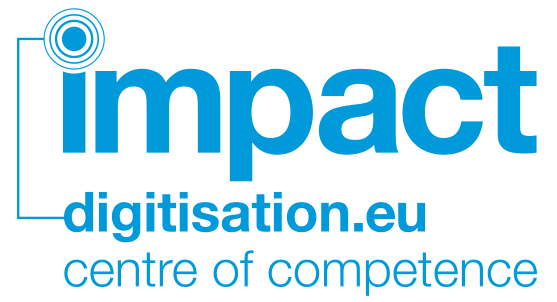Last Tuesday (October, 29th), in the framework of the Digital Heritage 2013 Conference in Marseille, a workshop on competence centres in digitisation and digital preservation took place. With the title “From European and national projects to high-quality services and products”, the feasible scenarios for the development and sustainability of centres gathering and spreading excellence were discussed.
 The participants, Daniel Pletinckx (V-MusT.net) , Halina Gottlieb (NODEM, Nordic Digital Excellence in Museums), Rafael C. Carrasco (Impact Centre of Competence) and Mohamed Farouk (Center for Documentation of Cultural and Natural Heritage, CultNat) expressed their concern that the current reductions in the budget of cultural heritage institutions could lead to insufficient funds for a sustained activity at the centres. Interestingly, museums prefer lower membership fees than libraries but, in contrast, they are more open to contracting specific services (which leads to slightly different funding approaches).
The participants, Daniel Pletinckx (V-MusT.net) , Halina Gottlieb (NODEM, Nordic Digital Excellence in Museums), Rafael C. Carrasco (Impact Centre of Competence) and Mohamed Farouk (Center for Documentation of Cultural and Natural Heritage, CultNat) expressed their concern that the current reductions in the budget of cultural heritage institutions could lead to insufficient funds for a sustained activity at the centres. Interestingly, museums prefer lower membership fees than libraries but, in contrast, they are more open to contracting specific services (which leads to slightly different funding approaches).
Several schemes were presented but, in all cases, the centre of competence seeks and collects requests from cultural heritage institutions, identifies the most adequate contractor or consortium, and commissions the work accordingly. The revenues for the centre come from a mixture of associated institutions’ fees, a percentage of the contracts, and from the participation of the centre in new research and development projects.
This business model requires, first, a sufficient number of members and associated partners, and, second, a stable legal status which allows the centre to tender. Cooperation between centres with non-overlapping lines of activity can progess in at least two lines: exchange of information (for example, about requests out of the scope of the centre), and new joint R&D proposals (such us semantic cross-linking between the descriptions of content).
Reblogged from Centres of Competence in Europe – Original post written by Rafael Carrasco.
